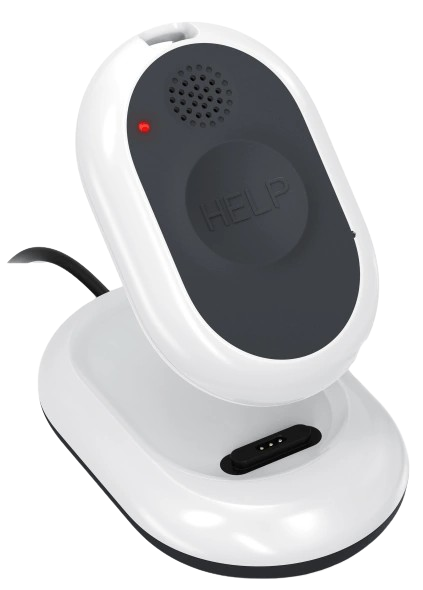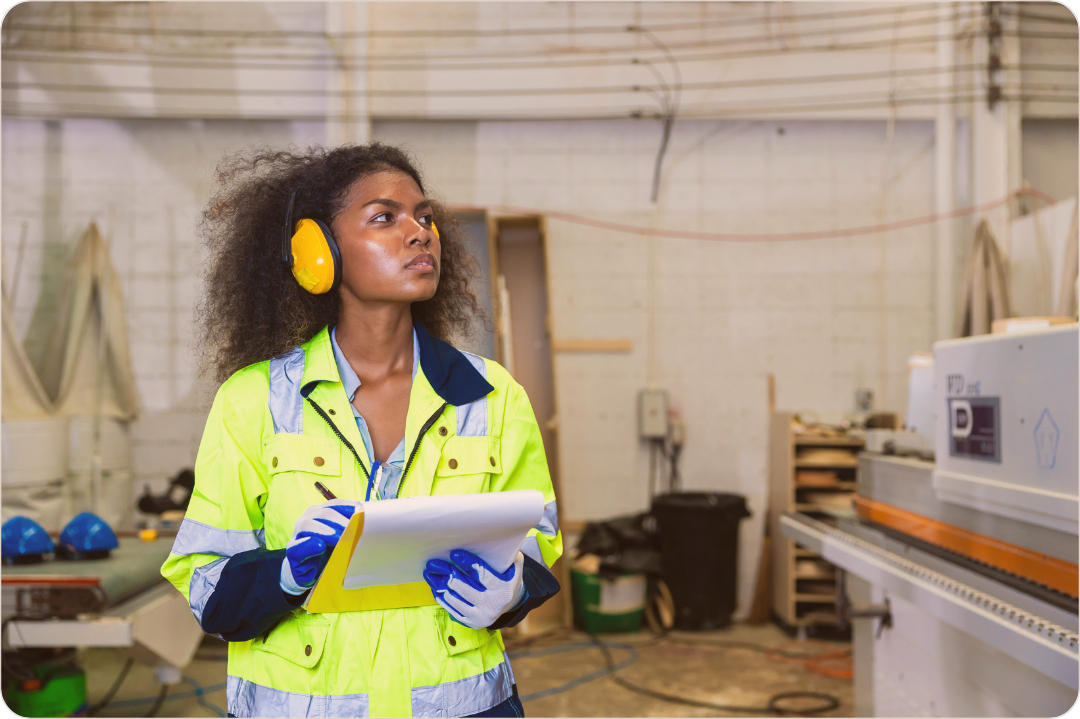Lone work is a reality across many sectors in Maine, from forestry and fishing to healthcare, education, and public services. Employees working in isolation—such as public inspectors, social workers, or night-shift custodians—face increased safety risks due to their lack of immediate assistance in emergencies. Employers have a duty to assess and manage these risks to ensure worker well-being.
Maine operates a limited OSHA-approved state plan, which applies only to state and local government employees. Private-sector employers and employees in Maine are regulated by federal OSHA (Occupational Safety and Health Administration). This dual-coverage system places a shared responsibility on both federal OSHA and the Maine Department of Labor (MDOL) to protect workers depending on their employment sector.
On This Page
Our Guide To Lone Worker Safety Policy And Legislation In Maine
In Maine, public-sector workplaces—such as schools, municipal offices, and state agencies—fall under the jurisdiction of the MDOL’s Workplace Safety and Health Division, which administers the state’s OSHA-approved safety plan. Private-sector employers are governed by federal OSHA regulations.
Although neither OSHA nor MDOL has a regulation specifically targeting lone workers, employers are still required to identify potential hazards and take appropriate measures to protect workers who operate without direct supervision.
How Maine Defines A Lone Worker
Maine does not provide a legal or regulatory definition for “lone worker.” However, in workplace safety contexts, it generally refers to any employee who performs tasks in isolation, without direct oversight or coworkers nearby who can respond in an emergency.
Common lone worker roles in Maine include:
- Oil and gas field operators and inspectors
- Agricultural workers in rural locations
- Home healthcare providers and hospice staff
- Night security personnel
- Janitorial and custodial workers
- Utility and maintenance staff in remote or confined areas
Because of their isolated conditions, these workers are at a higher risk for injury or delayed emergency response, making it critical for employers to prepare accordingly.
Employing A Lone Worker In Maine
Whether operating under federal OSHA or MDOL’s state plan, Maine employers must take reasonable steps to protect employees working alone. This includes job hazard analysis, emergency planning, and ongoing communication protocols.
Best practices include:
- Hazard Assessments: Identify job-specific dangers for lone employees.
- Check-In Protocols: Require regular contact through phones, apps, or automated systems.
- Safety Training: Equip employees with the knowledge to respond to threats or incidents independently.
- Monitoring Technology: Provide tools like GPS-enabled mobile apps to track worker safety in real time.
- Written Procedures: Maintain documented lone worker safety policies and ensure staff are trained on them.
Employers who follow these steps not only protect their workers but also reduce liability and demonstrate regulatory compliance.
Learn How You Can Protect Your Employees With Loneworker.com

With Loneworker.com you can be equipped with the knowledge and the means to protect your employees and protect your business. Contact us today to learn more about how Loneworker.com can protect you and your employees.
How The Safe Lone Worker App Can Protect Maine Lone Workers And Employers
The Safe Lone Worker app gives employers in Maine a proactive way to manage the risks of working alone. Features like SOS alerts, fall detection, timed check-ins, and GPS tracking help ensure lone workers are monitored and supported at all times.
Whether you're a municipal agency governed by MDOL or a private business regulated by federal OSHA, this technology adds an extra layer of protection that improves safety outcomes and ensures a faster emergency response.
Maine Lone Worker Policies
Maine operates a partial OSHA-approved state plan, overseen by the Maine Department of Labor (MDOL). This plan applies to state and local government workers only, while federal OSHA regulates the private sector. Though there are no laws that address lone workers directly, both MDOL and OSHA require employers to evaluate worksite risks and implement safety measures for all workers, including those operating alone.
Employers across Maine should carry out hazard assessments, use reliable communication systems, and provide proper training to reduce the risks associated with lone work. Safety tools like the Safe Lone Worker app can assist in meeting these responsibilities and enhancing worker security.
For the most accurate and current information, consult MDOL’s Workplace Safety and Health Division and OSHA.gov. This guide is provided for general informational purposes only and should not be taken as legal advice.
Maine Lone Worker Resources
OHS Contact Centre
- 1-866-415-8690
CDC / NIOSH
- 800-232-4636

Affordable Monitoring For Lone Workers In Maine

-
 Monitoring Your Employees' Safety
Monitoring Your Employees' Safety
-
 GPS Tracking And Monitoring
GPS Tracking And Monitoring
-
 Man Down Panic Alerts
Man Down Panic Alerts
-
 24/7 Protection Anywhere
24/7 Protection Anywhere
Lone Worker Legislation
Lone Worker Safety Policies And Legislation By State
-
 Alabama State Safety Policies And Legislation
Alabama State Safety Policies And Legislation
-
 Alaska State Safety Policies And Legislation
Alaska State Safety Policies And Legislation
-
 Arizona State Safety Policies And Legislation
Arizona State Safety Policies And Legislation
-
 Arkansas State Safety Policies And Legislation
Arkansas State Safety Policies And Legislation
-
 California State Safety Policies And Legislation
California State Safety Policies And Legislation
-
 Colorado State Safety Policies And Legislation
Colorado State Safety Policies And Legislation
-
 Connecticut State Safety Policies And Legislation
Connecticut State Safety Policies And Legislation
-
 Delaware State Safety Policies And Legislation
Delaware State Safety Policies And Legislation
-
 Florida State Safety Policies And Legislation
Florida State Safety Policies And Legislation
-
 Georgia State Safety Policies And Legislation
Georgia State Safety Policies And Legislation
-
 Hawaii State Safety Policies And Legislation
Hawaii State Safety Policies And Legislation
-
 Idaho State Safety Policies And Legislation
Idaho State Safety Policies And Legislation
-
 Illinois State Safety Policies And Legislation
Illinois State Safety Policies And Legislation
-
 Indiana State Safety Policies And Legislation
Indiana State Safety Policies And Legislation
-
 Iowa State Safety Policies And Legislation
Iowa State Safety Policies And Legislation
-
 Kansas State Safety Policies And Legislation
Kansas State Safety Policies And Legislation
-
 Kentucky State Safety Policies And Legislation
Kentucky State Safety Policies And Legislation
-
 Louisiana State Safety Policies And Legislation
Louisiana State Safety Policies And Legislation
-
 Maine State Safety Policies And Legislation
Maine State Safety Policies And Legislation
-
 Maryland State Safety Policies And Legislation
Maryland State Safety Policies And Legislation
-
 Massachusetts State Safety Policies And Legislation
Massachusetts State Safety Policies And Legislation
-
 Michigan State Safety Policies And Legislation
Michigan State Safety Policies And Legislation
-
 Minnesota State Safety Policies And Legislation
Minnesota State Safety Policies And Legislation
-
 Mississippi State Safety Policies And Legislation
Mississippi State Safety Policies And Legislation
-
 Missouri State Safety Policies And Legislation
Missouri State Safety Policies And Legislation
-
 Montana State Safety Policies And Legislation
Montana State Safety Policies And Legislation
-
 Nebraska State Safety Policies And Legislation
Nebraska State Safety Policies And Legislation
-
 Nevada State Safety Policies And Legislation
Nevada State Safety Policies And Legislation
-
 New Hampshire State Safety Policies And Legislation
New Hampshire State Safety Policies And Legislation







